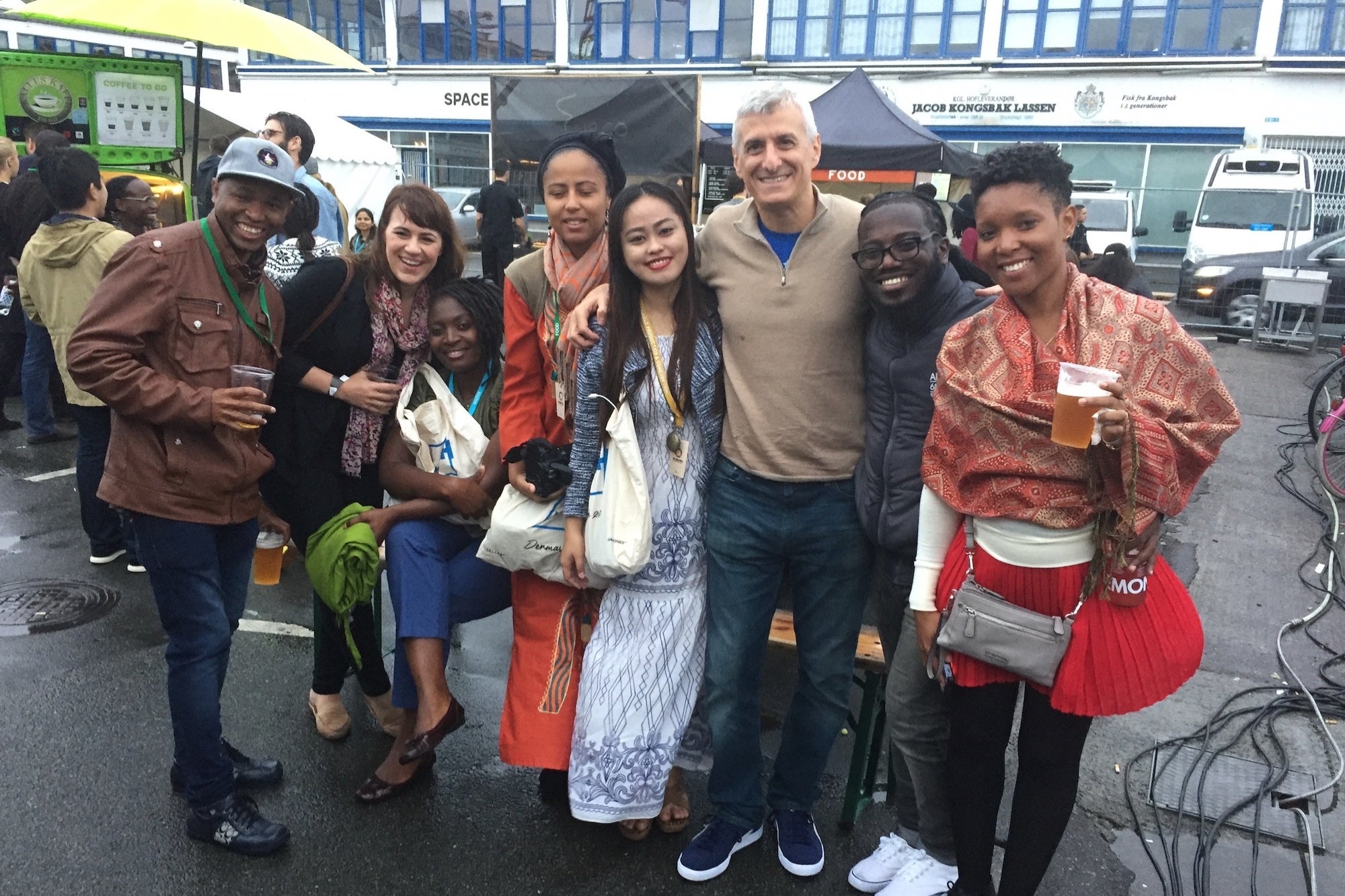5 min read
Opinions expressed by Entrepreneur contributors are their own.
I’m standing in a savanna in South Africa, surrounded by roughly 25 tranquilized elephants. It is 2018, and just minutes earlier the massive creatures had been darted by a veterinarian from a helicopter overhead.
The nature reserve in which these elephants reside has too many elephants for its habitat to handle. A national park in Mozambique, to which these elephants are soon headed, has too few elephants. Moving the animals from one to the other is part of an innovative conservation technique (translocation) that can help save both ecosystems.
Related: How to Start a Side Hustle: Manage Your Fear
As the sedated elephants are loaded into transport vehicles for the 1,000-mile journey to Mozambique, I wonder — and not for the first time — how did I get here?
I’d like to say it was because I made a brave decision to start my own company. But the decision was less “brave” than it was practical. It was simply too damn hard to find a job.
I had been employed over the previous few decades in newsroom-leadership positions at various media companies, ranging from big (New York Daily News, AOL, Huffington Post) to boutique (Boston Phoenix, Spy magazine), with tons of freelance work in between.
But in 2016, after a seven-year run at AOL/HuffPost, I was let go in a 500-person layoff, following the company’s merger with Yahoo!
I was 51 years old then — hardly ready to retire. But the market for journalists of my age demographic was not exactly pulsing with opportunities.
After regrouping for a couple of weeks, I ginned up the job-search machine. At first, several possibilities did arise; two even progressed to a fifth round of interviews. Alas, I didn’t get either gig, and I was wondering how I could afford to stay in New York with my family.
At that point, I happened to get back in touch with a dear friend, Giovanni Rodriguez, someone with whom I had previously worked in New York in the nonprofit space.
Related: How Resilience Led Me to Success
He had had his own marketing and consulting business for a number of years, and he painted an exciting picture, one in which we joined forces and launched our own media company.
While the idea was certainly enticing, I was terrified. I knew what I was good at, and that didn’t include running my own business.
Spinning a good story
But Giovanni knew how to spin a good story. Several years earlier, he had moved to the Bay Area with his family and had established deep connections in Silicon Valley, from tech startups to Stanford and Singular universities.
So in 2017, with two other partners, we launched Silicon Valley Story Lab (SVSL), a media company for a new age. To that point, organizations relied on earned media — coverage from established media companies — to report on their work or achievements. But increasingly, brands, nonprofits, and individuals started serving that content directly to an audience themselves. The problem for many of them was that they lacked the skill or capacity to effectively tell or promote those stories.
With SVSL, we used our journalistic experience to help clients and partners better tell their own stories.
Internally, we created a big tent, under which we could each pursue our own projects. I identified a space in the market for social-good-oriented storytelling, using the principles of the United Nations Sustainable Development Goals (SDGs).
The SDGs were adopted by the UN in 2015 and are, essentially, a blueprint for saving the planet by 2030. There are 17 Goals, the first 16 of which are assigned to readily identifiable social-good causes: hunger, poverty, education, gender equality, climate, etc. The last one, though — SDG 17 — is called “Partnerships,” and in my estimation, it is recognition by the UN that the public sector will never be able to raise the trillions of dollars necessary every year to achieve the first 16 Goals without partnering with the private sector.
So if a brand is doing virtually anything under the social good umbrella — from working hand in hand with nonprofits to CSR efforts — this strategy of tying their work to an international framework like the SDGs could help get 1) more visibility and 2) more impact for their efforts.
(We decided early on that this strategy would definitively not apply to greenwashing efforts, such as, say, British Petroleum efforts to clean up the Gulf of Mexico, which needed clean up only thanks to BP’s irresponsibility.)
The elephant project, for example, was a partnership between a private-sector entity, two national governments, and an NGO that established transnational corridors for wildlife. We suggested calling the effort Moving Giants, and our work “captured the capture,” as it were, in a documentary video series that can be found on the website we created. That website also featured daily blogs and weekly reported articles on elephants and conservation efforts around the world. In other words, we launched an elephant-focused journalism destination.
Now the story evolves further. This week (June 2021), I am launching Brooklyn Story Lab. While Giovanni will keep doing great things with SVSL and his new passion — a virtual theater company for the Zoom age (Remote Theater) — Brooklyn Story Lab will be laser-focused on social-good initiatives, from a new elephant effort to thought-leadership consulting with myriad Nobel Peace Prize winners to working with young, entrepreneurial changemakers from more than 150 countries.
The tectonic changes to the media landscape have been understandably scary for journalism veterans (like myself) to navigate. But good storytelling will always be an in-demand commodity — and it isn’t quite as difficult as moving 200 elephants 1,000 miles across national borders.
Lance Gould is the founder and CEO of Brooklyn Story Lab. He can be reached at [email protected]



![Read more about the article [The Outline By Inc42 Plus] Funding Boom Before The Bubble?](https://blog.digitalsevaa.com/wp-content/uploads/2021/12/The-Outline-96-_Social-300x157.jpg)





![Read more about the article [Matrix Moments] Why network effects are important for any startup](https://blog.digitalsevaa.com/wp-content/uploads/2021/07/Imagei5di-1627046203887-300x150.jpg)
